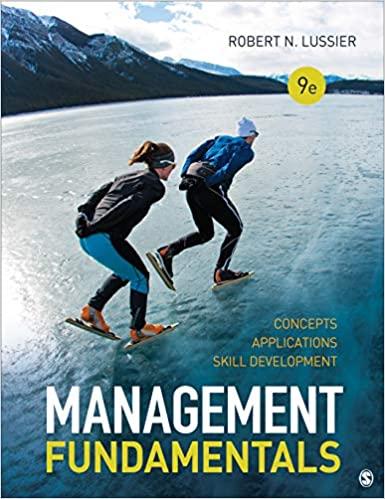Question
Part 1: Multiple Choice In this section, bold your answer choice. Select only one answer per question. 1. An indirect message writing strategy: a) Is
Part 1: Multiple Choice
In this section, bold your answer choice. Select only one answer per question.
1. An indirect message writing strategy:
a) Is best for all business messages.
b) Is no different than a direct strategy.
c) Minimizes an audiences negative reaction.
d) Maximizes an audiences negative reaction.
2. Ideally, your business paragraphs should be 5-6 sentences long, but they can go up to:
a) 8 sentences
b) 12 sentences
c) 10 sentences
d) 14 sentences
3. _______ are harder to understand and may miss necessary information even if that information has been gathered.
a) Organized messages.
b) Verbal messages.
c) Unorganized messages.
d) Written messages.
4. Memos are necessary for messages that:
a) Are too short for email.
b) Are too long for email.
c) Need to be confidential.
d) Need to be delivered quickly.
5. Proofreading refers to checking for:
a) Spelling, grammar, and punctuation.
b) Names, numbers, facts, and format.
c) Both of the above.
d) None of the above.
6. AIRA stands for:
a) Attention, intellect, resistance, and action.
b) Action, interest, reiteration, attention.
c) Attention, interest, resistance, and action.
d) Action, interest, resistance, and allowance.
7. Which of the following is NOT a way in which technology has made workplaces evolve:
a) Flattened hierarchies.
b) Anytime, anywhere offices.
c) Increasing global competition.
d) Employee privacy.
8. _______ is a website formatted with journal-like entries written by one person.
a) Facebook.
b) A blog.
c) Twitter.
d) An intranet.
9. Communication is successful when:
a) The meaning of a message is understood.
b) The sender is concise.
c) The sender encodes their idea.
d) The receiver gets the message.
10. Which strategy is best for an unreceptive audience:
a) Indirect.
b) Direct.
c) Formal.
d) Informal.
11. Business writing should be:
a) Purposeful.
b) Economical.
c) Audience oriented.
d) All of the above.
12. Physical nonverbal communication refers to:
a) Time, space, territory, and appearance.
b) Facial expression, appearance, and body movement.
c) Time, territory, eye contact, and facial expression.
d) Eye contact, facial expression, and body movement.
13. The four sentence types are:
a) Simple, difficult, confusing, and meticulous.
b) Simple, compound, complex, and compound-complex.
c) Compound, complex, compound-complex, and complex-compound.
d) None of the above.
14. When writing a persuasive message, you should _______ in the opening:
a) Reduce resistance.
b) Motivate action.
c) Gain attention.
d) Build interest.
15. This is a Bonus Question. Any answer you choose is correct.
a) This is a bonus mark.
b) This answer is correct.
c) This is also a bonus mark.
d) This answer is also correct.
Step by Step Solution
There are 3 Steps involved in it
Step: 1

Get Instant Access to Expert-Tailored Solutions
See step-by-step solutions with expert insights and AI powered tools for academic success
Step: 2

Step: 3

Ace Your Homework with AI
Get the answers you need in no time with our AI-driven, step-by-step assistance
Get Started


